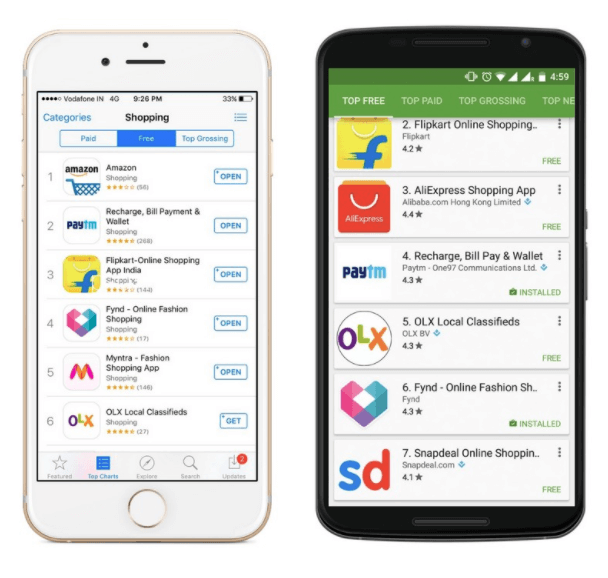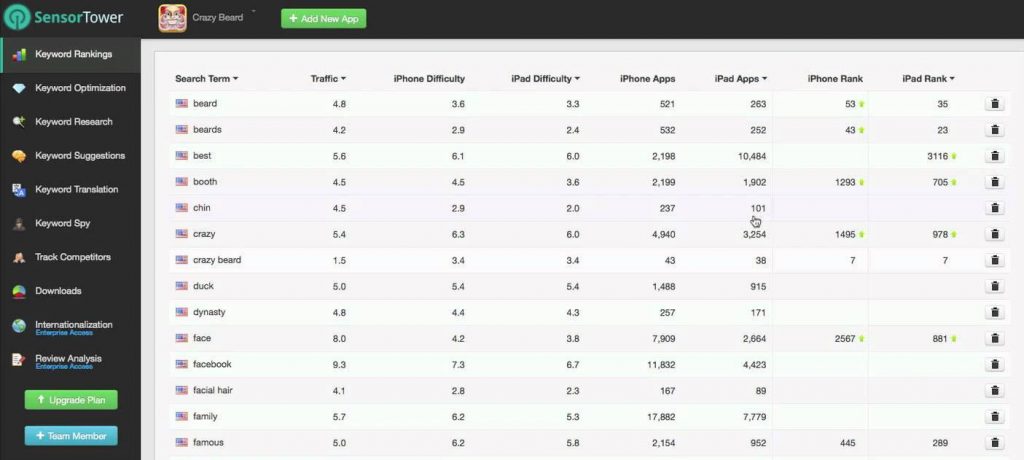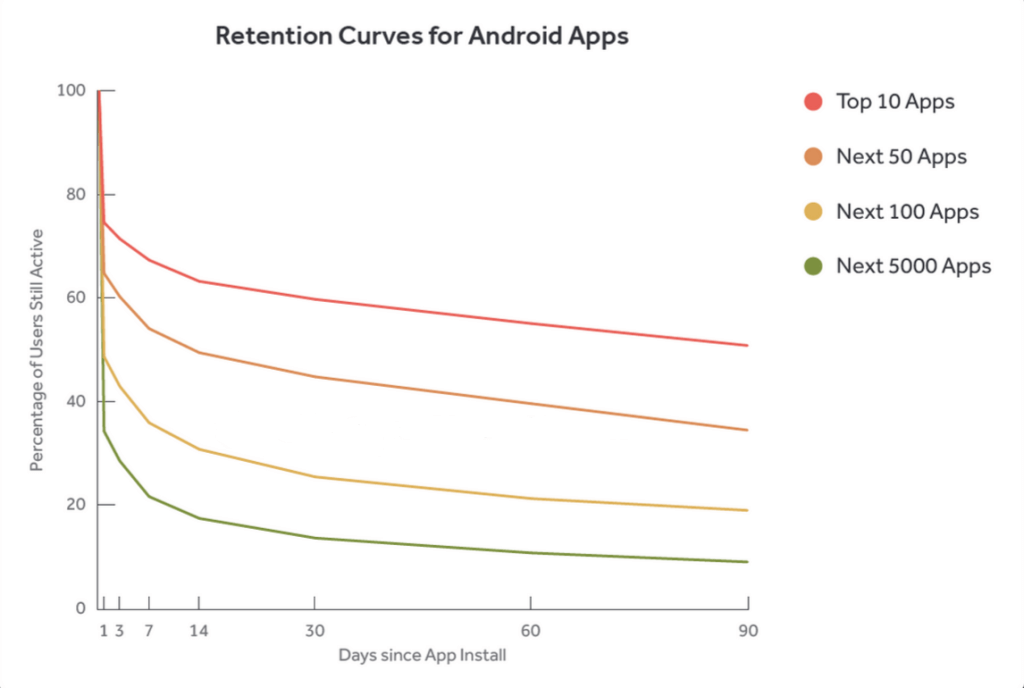Key App Store Optimization Techniques
 Alexandra Lamachenka
Alexandra Lamachenka Many quality apps fail to gain traction, trigger downloads, and generate returns in rapidly changing app store environment. Anthony Hurtado realized it thanks to his experience in leading BizDev for Latin America’s largest mobile gaming company and launching a mobile ad network.
So, he decided to help app publishers get the right app store users and convert more downloads to dollars via Mobile Yield Strategies. We managed to talk to Anthony about app store optimization (ASO) and mobile marketing tips.
Anthony Hurtado: ASO is any organic and non-paid effort that leads to app downloads and higher ranking in app stores.
The main goal of ASO is to find profitable app store users. What’s more profitable than a user you didn’t have to pay for directly. It all leads to LTV being greater than CPI (cost per install) or CPA (cost per acquisition). If I’m getting a free user from search, that’s great. Yet, being #1 or #2 in the app store ranking increases chances of my app being downloaded by such free users.

First, it helps to get app store users cheaply. It also contributes to app’s branding. If your app can boast #1 ranking out of 50 in this app store category, it helps your branding efforts. Everything is interdependent. You don’t usually do only ASO, paid marketing, or PR. Higher app store ranking from ASO will help you with other marketing campaigns and brand identity. It’s important because you want relevant store users to download your app.
If my app store ranking is high, people go to my page but don’t download the app for some reason, that means I need to engage in ASO straight away. It’s important to understand that store product page visits to actual app downloads rate will never be 100%.
If you have 100% conversion rate in the app store, it presupposes getting a fair amount of uninstalls which is going to hurt your app. After downloading an app, a store user realizes that it doesn’t solve their problem, uninstalls the app, and gives you a bad review in the app store. That would actually hurt your ASO efforts. So, it’s better to rely on 70% or 80% conversion.
TUNE found out recently that app’s title is one of the biggest factors. A description is another huge factor which matters a bit more on Google Play due to keyword ranking. App store ranking is the third important factor as it represents social proof, other app store users who have already experienced the app. I’m not saying that screenshots, video, or icon are not important. However, title, description, and rating are core factors.
It’s much more relevant for Google Play. Google and Apple have a black box on everything. Still, if you look at how you get ranked on app’s keywords on Google Play, it’s through a lot of SEO methods. E.g. using a keyword organically in a phrase and description not like a robot but like a human.
Plus, the number of times you can use one keyword is limited. For example, when you use a keyword 5 times, you get the highest possible ranking for the keyword. They also care about backlinks on Google Play (how many sites are linking back to your app store page). There are a lot of similarities with SEO in that sense.
I think new services are going to emerge. In earlier stages of ASO there was only SensorTower for app’s keywords and now we have dozens of keyword services. The importance of app store search is huge, some reports state that 68% apps downloads are a result of app store search.

It’s more intensive in the beginning than afterward. Yet, it’s an everlasting process. Lots of app publishers optimize their app store pages once and think it’s done. That’s not the case, you do need to have some ongoing support there.
ASO is what you can do before your day one. You can do your market research, study apps of competitors, see what they are ranking for, look at app store categories, see what secondary category to target, maybe find a different primary category that is less competitive. For example, we had a sports app and I recommended to stick to this genre within ASO activities as it composes a small percentage (2.8%), therefore there is not much competition in this app store category.
Focus on more tangible things like what keywords, imagery, and title you plan to use for an app. In what order you are going to test them afterward in post-launch. Start with actual deliverables: app’s screenshots, title, keywords in store product page description. You also should have your app store rating and review tools in place beforehand, so you’ll be able to capture that quickly.
I’d use a tool like SplitMetrics after your first month in an app store, once you already got your low hanging fruit. If you’re a small team trying to prioritize things, A/B testing is amazing, lift is amazing. However, you can get 2 000 app downloads with a 10% lift whereas if you already have 200 000 downloads in an app store the same 10% lift gets you much larger proportionate effect. So, getting a low-hanging fruit, in the beginning, you achieve app’s traction which can be scaled later. Then you get this competitive edge over the people that try to do everything at once.
I have two that I use the most: SensorTower and AppAnnie. SensorTower you pay for, AppAnnie you don’t. I use SensorTower primarily for app’s keyword research, in terms of the traffic level, competitive level, and net positive score. If I can’t get a net positive score, it doesn’t mean I won’t use this keyword. I try to use this word in a combo to get a net positive score, it results in multiple keywords combinations. In that case, I will use the word.

It happens that I still can’t get a net positive score, but I need a keyword to describe my app. If you had a fantasy sports company when such keywords as ‘sports’ and ‘fantasy’ were not ranking, the traffic score was a 4, but the competitor’s was a 6 – (minus). Thus, if a keyword represents a core of my app, I’m going to have it anyway. If it doesn’t, I would toss it out.
I use AppAnnie for general analytics and to see where my keywords are ranking today. I can get a lot of value from that. SensorTower also has the same feature but I like App Annie’s functionality better. It’s really a key to have a nice app store analytics stack. Even if you don’t have to implement it right away, it’s vital to know where your app is going from day one.
Technically, you can say Apptentitive is an ASO tool because it helps your app’s ratings and reviews. If you build in Unity you can use Unirate. It’s not as fancy but much simpler and still going to improve your app’s ratings dramatically if you implement it right.
I measure if I am getting profitable app store users if we’re achieving LTV and CPI. If the app isn’t charging and I have a relatively low CPI, I check if we have engaged users and keep the app’s user base. An engaged user base and retention effect are the most important metrics.
With one of my clients, I saw an increase from 62% conversion rate for people who went to the app store page and actually downloaded it to 83% in just 3 weeks. We did a few different things, so I can’t isolate any of factors that affected such app downloads lift.
It’s gonna be different for Apple and Google. For Google Store, it’s important to choose the right keywords and put them in throughout app’s description in a non-robotic fashion, so that Google wouldn’t say it’s a robot and ignore the keywords.
With Apple App Store you should simply communicate what your app does, what problem it solves, in what order and how. The shorter, the better. Being honest in the App Store is a big deal because if you download my app, you have a set of expectations. If the app doesn’t deliver on that or exceeds it, I get an unhappy user who’s going to uninstall the app and put a negative traction.
Organic space with lots of users feels like a black hole, so you don’t know what Apple or Google care about and you cannot really measure it. It’s no longer the case as it used to be. With companies like Yozio, Branch Metrics, and others you are able to construct a lot of pre-install and post-install user paths. You can get a detailed look at your users and how one got to your app store page. You can see what they are doing afterward. Post-install app event tracking is huge. That’s one thing I feel a lot of people miss out.

The second thing is app store ratings and reviews prompt. Try to avoid people going to the app store to leave a negative review, intercept this first. With one of the apps that I worked with we used conversational approach, the prompt wasn’t like: “Hey, you use our app. Would you like to rate it?” The instant answer would be ‘no’.
In that case, we knew that users had an attraction/loyalty to Rick Harrison (the TV personality here in America). So we made it sound as if it was Rick asking them: “Hey, how is it going? By the way, if it’s going well, would you like to rate this?”. This is the personal appeal. Find those kinds of triggers with your app’s audience.
Don’t make your app sound cold, business-like and lifeless. And you’re going to see its app store rating skyrocket: with a personal appeal, we got ours from 3.5 up to 4.3 rating. I say skyrocket because it was actually pretty quick, we got this result in less than a month. Besides, getting up to beyond 4 points in app stores is usually a hard thing.
The third one is for Android developers. They forget that backlinks do matter on Google Play. They want to see a lot of site points to your app. I personally don’t think that app sites are super helpful when it comes to driving downloads. Creating app review sites sure wouldn’t hurt you, but don’t spend too much time on that in the beginning of store journey of your app. Such sites should be created at some point, but don’t think that users are going to go to that site, read it, and download your app. Cause they won’t. However, it’ll link to your page, Google Store will notice, and it’ll affect your store ranking eventually.
Readers who’d like to discuss mobile monetization methods, organic or paid downloads campaigns, or even app’s analytics stack they should be using, can reach me via [email protected].
